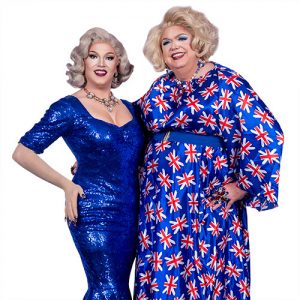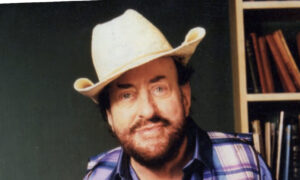Kitty Patten is Halfway II Heaven’s Eurovision mastermind, what she doesn’t know, is literally not worth knowing and on Saturday she will be hosting the live coverage of this year’s Final at Halfway alongside Kelly Mild and Shae G’Day. We all know what the contest is like now, but how did it start and how has it changed over the years? We asked Kitty to give us all a Eurovision history lesson…

Picture it, Switzerland, 1956, and in an office of the European Broadcast Union, an idea was coming together…
They had a desire to show off their new cutting edge technology, and at the same time bring together a war torn continent. Based on the popular Italian San Remo Song Festival, the idea chosen was to have a multi country song contest, that could be shown live across much of Europe.
The Eurovision Song Contest was born.
Fast forward to 2019, and this year’s contest will be held in Tel Aviv, Israel, where 41 countries will compete, and the final will be watched by hundreds of millions of viewers across the globe. For many, Eurovision has become the ultimate in ‘Event TV’, and an unmissable annual fixture in the TV schedules. It now costs host broadcasters tens of millions of Euros to host, and takes months of planning to stage.
But let’s go back again to 1956, and to the first contest where it all began ….
Seven contestants from Belgium, France, Germany, Italy, Luxembourg, Netherlands, and Switzerland travelled to Lugano in Switzerland, and for the one and only time in Eurovision history, each country performed two songs. There was no telephone voting, and a two person jury from each competing country voted for their winner. After the votes were counted, Lys Assia and her song Refrain for Switzerland had won the first contest.
The contest was viewed as a great success, and the following year a further three countries entered, including the United Kingdom. The honour of being the UK’s first ever contestant belongs to Patricia Bredin, who came 7th with her song All. Although we skipped the 1958 event, we rejoined in 1959, and haven’t missed a year since.
As technology improved, so has the presentation of the contest for TV audiences. Colour came to Eurovision in 1968, when the first contest to be broadcast live in colour was transmitted from the Royal Albert Hall in London.
The fate of the live orchestra was sealed in 1999, when the use of live music was made optional. The contest that year was held in Israel, and to save money, the host broadcaster took advantage of the change, and did not provide any live musicians. Since then, all songs are performed to vocal free backing tracks.
Perhaps the biggest, and most controversial changes have come from the increase in the number of broadcasters wanting to enter the contest. As Europe entered the 1990s, it underwent huge political changes. New, and formerly independent countries regained their freedom as the Iron Curtain came down and the USSR and Yugoslavia broke up. The membership of the EBU grew, and so did the list of broadcasters that wanted to join the Eurovision party.
This influx of entries over the years, caused the contest to implement different rules of entry to cope. Many different systems were tried, but the organisers have settled on the current trusted formula; two semi finals and a grand final of 26 countries. This number was exceeded only once in 2015, when a record 27 countries were in the grand final. This was to accommodate Australia’s invitation to join the 60th anniversary contest as a guest entry. Their contribution was so well received, that they have received an invitation to return every year since.
From 2000, the ‘Big Five’ rule was introduced, a rule that guarantees the UK, France, Germany, Italy and Spain get automatic entry into the final. This golden ticket has been controversial, as all other countries, apart from the hosts, have to go through the semi final process. The big five countries contribute the most financially to the hosting of the contest. It is often said that without that financial contribution the contest may become financially unviable.
Another contentious issue has been how the winner is chosen. Since 2008 the winner has been decided by a combination of votes from a jury made up of industry professionals, and those from a public televote. Each element makes up 50% of the final vote, and the idea was to minimise ‘neighbourly voting’ and diaspora voting. This year these votes will be given out in a slightly different way. Watch out for the light change, it is going to make the voting exciting right down to the last moment.
Controversies aside, the contest has been an amazing success. It has contributed to pop culture in ways that were probably never imagined back in 1956.
International careers have been made, most notably ABBA and Celine Dion and I think we have all used the phrase ‘nul point’ at some time.
The UK’s record in the contest is amazing; we have won the contest five times and come second an incredible fifteen times. No other country is close to us in the number of top 3 finishes.
Although the last few years have not been as kind to us, I am convinced our time will come again!
Kitty will be hosting the Eurovision screening on Saturday at Halfway II Heaven, 7 Duncannon Street, Charing Cross, WC2.
Entry is free.
Photos by chrisjepson.com














